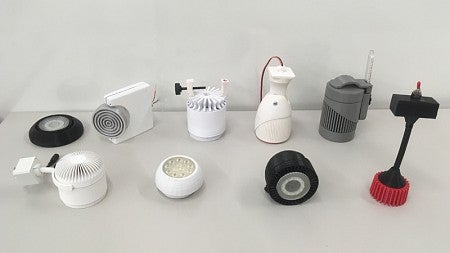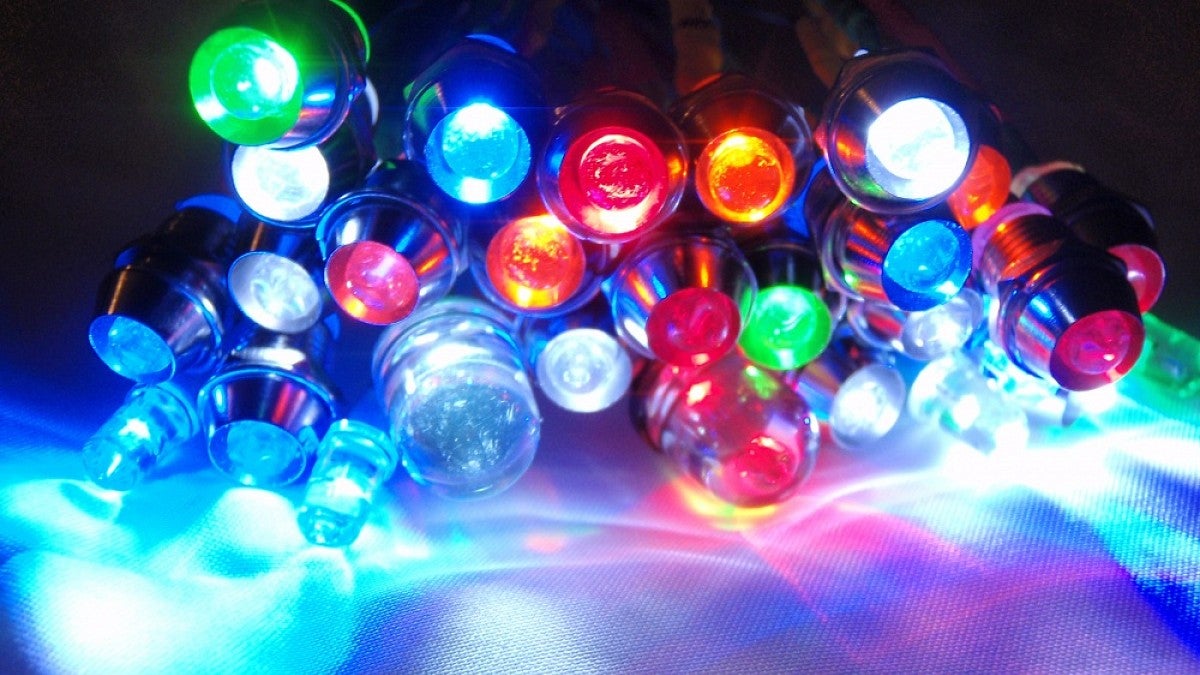For a Portland company still early in its life, reaching out to the UO was a way to get some fresh ideas on a project. For the students in a product design class, addressing the challenge boosted their emerging skills and confidence.
Luxium Lighting, founded in January 2015, wanted to package some of its new color-changing, light-emitting diode bulbs into stylish fixtures for commercial and residential users. The company seeks to reinvent the technology for theater-style lighting with LED bulbs amid the phase out of incandescent bulbs.
Luxium connected with Wohnee Arndt, a professor in the UO Department of Product Design, with help from Oregon BEST, a nonprofit economic development organization founded by the state in 2006 as the Oregon Built Environment & Sustainable Technologies Center.

Students, juniors and seniors, in Arndt’s fall course Lighting Design Studio were put to work. They made prototypes and testing models using 3-D printers and metal computer numerical control routers.
“Throughout the course, students worked closely with Luxium’s lighting experts, and invited internationally known industrial designers such as Lars Beller and Chris Specce to work with students,” Arndt said.
Beller, based in Norway, and Specce, who works out of Rhode Island and New York, came to Eugene to advise the students.
“Working with Luxium was a great opportunity to design a product for a specific company and market,” said UO student Sarah Roner-Reiter, who was on a team with Tin Le. “The class was relatively small, and many of us have other classes together. We would often see what other groups were working on and how they were tackling some of the issues we were all experiencing. The majority of the design process was with our individual teams.”
In the end, two teams split a $5,000 prize. Roner-Reiter and Le’s team produced an LED track light with integrated interchangeable parts. Andrew Zielinski and KeeAnna Turner teamed up on a rotational motion angle, changeable LED track light with a pole-bar mounting system.
“We decided on a simple cylindrical shape that has a 30-degree angle cut in the middle of it, that acts as a heat barrier between parts and a rotational angle changer for the light beam,” Zielinkski said.
Le and Roner-Reiter toyed with more than 50 ideas before settling on their final product.
“We probably had at least 30 different parts printed to test the fitting, placement of magnets, and the way that the user interacts with the lighting itself,” Le said. “We usually printed and tested, and if it didn’t work we would go back and test it again.”
Luxium representatives visited the class several times to present their technology and review the students’ progress, Turner said. “I really appreciated their trips because we got valuable feedback.”
"It was impressive to see the various concepts the student teams came up with, and then watch and support them as they refined their ideas into working prototypes," said Roger Hicks, Luxium's vice president of marketing and product managements. "They were very involved in learning about the real concerns that a product company needs to deal with when developing new products. In the end we learned a lot about the design process and how creative and industrious the students could be in producing final design prototypes after starting out with just few instructions and general concepts of what was possible."
Luxium founder and CEO Arlie Conner agreed: "We were certainly intrigued with many of the specific sketches and models that the teams created. One striking thing was how quickly the students were able to make working prototypes. There was a high degree of professionalism, and we would like to think we also contributed to the students, as they may have had little exposure to thermal management, LED lighting issues, optics and the like."
Luxium has leveraged the resources of several small providers in the Portland area, gaining insights about their unique design and manufacturing skills, to help build the company, Hicks said.
The experience made an impact on the UO students.
For Le, it helped him see his future: “I want to focus more on human-centered design, designing for the needs of the user, rather making things just pretty without any purpose.”
For Zielinski: “This class was a tremendous boost in confidence as a design student, and will help to propel me into the coming months as I send out my portfolio to various design positions across the Pacific Northwest.”
“It was great to work for a company while still in college,” Turner said. “I would love to do it again and see the university offering more opportunities in guided interaction with businesses through a class. It gave a greater sense of purpose to the class and it was wonderful to feel like we were directly practicing skills that would be useful in the professional world.”
—By Jim Barlow, University Communications


